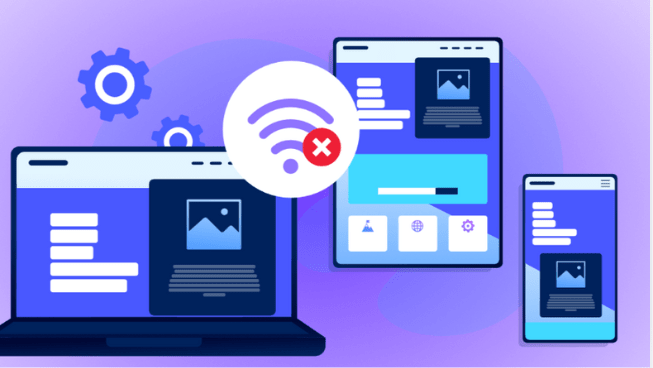Think your smartwatch is just counting steps? Think again.
We are living in a world where your wristwatch can detect heart attacks, your ring can analyze sleep quality, and your earbuds can track stress levels—in real time. Welcome to the age of health tech and wearable devices, where the line between medicine and technology is disappearing at lightning speed.
In the past decade, health technology has made incredible strides. But the recent boom in wearable health devices is pushing boundaries like never before. These aren’t just fancy fitness trackers—they are miniature medical labs strapped to your body, offering continuous health monitoring, early disease detection, and even remote diagnostics.
In this article, we’ll uncover the most groundbreaking advancements in wearable health tech, how they’re transforming healthcare delivery, what’s coming next, and why you may never need a routine doctor’s visit again.
The Rise of Health Tech: A Perfect Storm of Innovation
What sparked this explosive growth in wearable health devices?
Several converging factors created the perfect storm:
- Increased focus on personal wellness and preventive care
- Pandemic-driven demand for remote monitoring and telemedicine
- Rapid advances in sensors, AI, and wireless technology
- Falling hardware costs, making devices more affordable and accessible
The result? A surge in innovation—from smartwatches that monitor blood oxygen to AI-enabled patches that analyze sweat in real time.
Healthcare is no longer confined to clinics and hospitals. It’s now on your wrist, in your pocket, and even woven into your clothes.
The New Generation of Wearable Health Devices
Forget clunky pedometers. Today’s health wearables are sleek, powerful, and deeply intelligent.
Here’s what the new generation of devices can do:
1. Smartwatches and Fitness Bands
These are the most common, but also the most rapidly evolving. Modern smartwatches now feature:
- ECG monitoring (electrocardiogram) for detecting atrial fibrillation
- Blood oxygen sensors (SpO2) to monitor respiratory health
- Heart rate variability (HRV) tracking for stress and recovery
- Fall detection and emergency SOS alerts
- Advanced sleep tracking using motion and heart rate data
Popular devices include Apple Watch Series 9, Fitbit Sense 2, and Samsung Galaxy Watch 6—all equipped with sensors once reserved for clinical settings.
2. Smart Rings
Don’t underestimate these compact gadgets. Smart rings like the Oura Ring and Motiv offer:
- Continuous temperature tracking
- Sleep cycle optimization
- Respiratory rate and HRV monitoring
- Recovery and activity insights
Because they are worn 24/7 and fit snugly, rings provide some of the most accurate biometric data available.
3. Wearable ECG Monitors
Devices like AliveCor’s KardiaMobile give users the ability to perform clinical-grade ECG tests at home and share results instantly with their doctors.
This is real-time heart health—without the hospital visit.
4. Continuous Glucose Monitors (CGMs)
For diabetics and health-conscious users alike, CGMs like Dexcom G7 and FreeStyle Libre offer:
- Real-time glucose tracking without finger pricks
- Alerts for highs and lows
- Integration with smartphones and insulin pumps
Some athletes even use CGMs to optimize nutrition and performance.
5. Smart Clothing and Patches
Yes, your shirt can now monitor your health. Companies like Hexoskin and BioButton are creating garments and patches that track:
- Breathing rate
- Posture and movement
- Core body temperature
- Sleep and cardiac activity
These wearables are especially valuable in clinical trials and post-surgical care.
AI and Machine Learning: The Brains Behind the Wearables
Data alone is not enough. It’s the AI algorithms behind the devices that transform numbers into life-saving insights.
Here’s how AI is revolutionizing wearable health tech:
- Predicting heart conditions before symptoms appear
- Detecting respiratory issues using changes in sleep patterns or blood oxygen
- Identifying early signs of infections, including COVID-19, through subtle biometric changes
- Offering real-time coaching based on stress, sleep, and activity levels
This is personalized healthcare at scale—adaptive, intelligent, and proactive.
Remote Patient Monitoring (RPM): Healthcare Without Walls
The real power of wearables lies in connecting patients to providers remotely. This model is called Remote Patient Monitoring (RPM), and it’s exploding.
Hospitals and clinics now use wearable data to:
- Monitor chronic conditions like diabetes and hypertension
- Track post-operative recovery from home
- Reduce hospital readmissions through early intervention
- Maintain elderly care from a distance
RPM isn’t just convenient—it’s effective. Studies show that remote monitoring can reduce emergency visits, cut costs, and improve patient outcomes.
Mental Health Tracking: Monitoring the Invisible
Mental health is finally being treated with the urgency it deserves—and wearable tech is stepping in.
Many devices now include features to track and manage:
- Stress levels via HRV and skin temperature
- Mood fluctuations based on behavioral patterns
- Sleep quality to identify anxiety and depression risks
- Mindfulness coaching with real-time feedback
Tools like Fitbit’s stress management score or Apple’s Mindfulness app are just the beginning. Soon, your device may detect signs of burnout, depression, or panic attacks before you do.
Women’s Health: A New Frontier for Wearables
Historically, health tech ignored women’s needs. That’s changing fast.
Wearables now track:
- Menstrual cycles and ovulation with predictive analytics
- Pregnancy health metrics such as fetal heart rate
- Menopause symptoms, including temperature and sleep disturbances
Devices like Ava and Bellabeat are pioneering personalized women’s health solutions, offering insights tailored to female physiology.
The Integration of Health Wearables with Healthcare Systems
Wearables are not just consumer gadgets. They’re becoming clinical tools that integrate with health records and physician platforms.
Key integrations include:
- Syncing biometric data to electronic health records (EHRs)
- Allowing doctors to review real-time data between appointments
- Powering AI-driven diagnostics with massive data sets
- Enabling virtual care ecosystems in hospitals, clinics, and homes
Tech giants like Apple, Google, and Amazon are racing to turn wearables into primary care platforms.
Challenges and Concerns: What Could Go Wrong?
As promising as health wearables are, they’re not without issues:
1. Privacy and Data Security
Health data is extremely sensitive. If wearables are hacked or misused, it could lead to identity theft, insurance bias, or targeted exploitation.
2. Data Overload
Too much data can overwhelm patients and even doctors. Not every blip or fluctuation needs action—context matters.
3. Accuracy and Regulation
Many wearables are not FDA-approved medical devices. Without rigorous testing, misleading data could cause panic—or missed warnings.
4. Health Inequity
Not everyone can afford the latest tech. If wearables become central to healthcare, low-income populations may be left behind.
What’s Coming Next: The Future of Wearable Health Tech
We’re just scratching the surface. The next wave of wearables promises to be even more immersive, intelligent, and life-changing.
Here’s what’s on the horizon:
- Non-invasive blood pressure and glucose monitoring via optical sensors
- Smart contact lenses that track intraocular pressure or glucose levels
- Implantable chips for chronic disease management
- AI-powered diagnostic engines running entirely on wearable data
- Personal health avatars that analyze data trends and alert you or your doctor
Imagine a future where you never get surprised by a medical condition again—because your body has been whispering the warning signs all along, and your wearable was listening.
Conclusion: Your Body Has a Voice—And Wearable Tech Is Helping It Speak
The fusion of health technology and wearable devices is more than a trend—it’s a paradigm shift in how we think about health. We’re moving from reactive to proactive care, from occasional doctor visits to continuous monitoring, from generic advice to hyper-personalized insights.
Whether you’re a fitness enthusiast, someone managing a chronic illness, or simply looking to live better and longer—wearable health tech is becoming your most trusted health partner.
But with great power comes great responsibility. We must ensure that innovation doesn’t outpace regulation, that privacy is preserved, and that this revolution is accessible to everyone—not just the tech-savvy elite.
The next doctor you trust the most may not wear a white coat. It might live on your wrist.
FAQs
Q1: What are the most advanced wearable health devices available today?
Devices like the Apple Watch Series 9, Oura Ring Gen 3, Dexcom G7 CGM, and BioButton offer advanced features such as ECG monitoring, real-time glucose tracking, temperature sensing, and clinical-grade data analysis.
Q2: Are wearable health devices accurate?
Most leading wearables offer reasonably accurate health data, though not all are approved for clinical use. Devices approved by regulators like the FDA tend to provide more reliable results.
Q3: Can wearables replace traditional doctor visits?
While wearables provide valuable insights and enable remote monitoring, they are best used as complementary tools, not full replacements for in-person diagnostics or treatments.
Q4: How do wearable devices improve chronic disease management?
Wearables enable continuous tracking of key health metrics, allowing early intervention, medication adjustment, and reduced hospital visits for patients with diabetes, heart disease, or hypertension.
Q5: Are there privacy concerns with wearable health tech?
Yes. Since these devices collect sensitive personal data, strong data encryption and transparent privacy policies are crucial to protect users.
Q6: How is AI used in health wearables?
AI analyzes biometric data to detect anomalies, predict health risks, offer personalized recommendations, and support early diagnosis of various conditions.
Q7: What’s the future of wearable health tech?
Expect innovations like non-invasive blood testing, smart contact lenses, implantable chips, and AI-driven personal health assistants to redefine what wearable health technology can do in the next 5–10 years.



